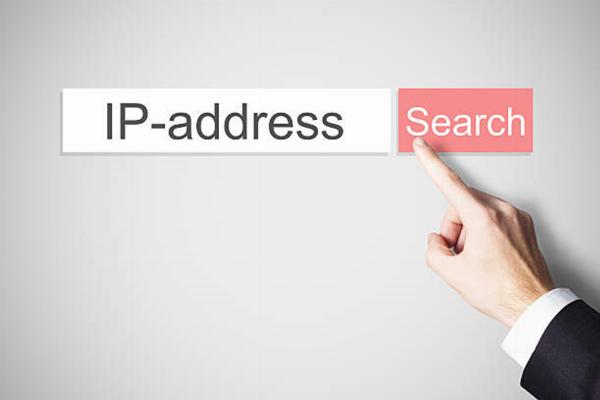 Schema + Rich Snippets – Dominate Search with Visual Results!
Schema + Rich Snippets – Dominate Search with Visual Results!
Parts of a URL: (A Comprehensive Guide)
Written by Mary » Updated on: June 17th, 2025

Having a website is essential for any company. Fortuitously, a significant number of proprietors of small businesses fail to recognize essential components of their website that have the potential to impair its effectiveness as a sales and marketing instrument. Even though you may be aware of the significance of stunning design and copy that is effective in selling, how much consideration have you put into your URL? Other components of your URL can have an impact on the performance of your website, but you most likely select a strategic domain name based on the name of your company.
Even though the majority of people are aware of what a URL is, many do not fully comprehend all of the components that comprise it. If your company name is included in the URL, it can appear at first that you do not need to be familiar with the various components of a URL. The performance of your website and the SEO strategy you employ might be significantly impacted by the URLs of your website. Find out more about the many components of a URL and how they impact your company by continuing to read this article to uncover our URL breakdown.
A URL: What is it?
The abbreviation "URL" refers to "uniform resource locator," and it provides the internet address of your company. It is possible for users to access the information that is located on your website through the use of a URL, which is comprised of a variety of elements that communicate to web servers the kinds of material and information that shall be shown. The URLs of websites are customizable, which means that you are free to alter them to whatever you like.
To begin, however, you need to have a solid understanding of the components that make up a URL as well as the ways in which various URL formats might influence your overall marketing strategy. Remarkably, the structure of your URL can benefit search engine optimization (SEO) efforts, thereby assisting you in ranking higher on search engines such as Google. Additionally, it can better the user experience, which in turn can lead to an increase in conversions.
The fundamental components that make up a URL-
There are times when it can be difficult to comprehend the structure of a URL. It's possible that you are familiar with your domain name, but don't know what the other components of a URL mean or why they are significant. Despite the fact that URLs might not appear to be significant to your marketing plan, they might have an effect on the performance of your website.
1. Scheme
When web servers get a request to view a page on your website, the scheme, which is sometimes referred to as the protocol, instructs them on which protocol to utilize. At this point in time, the most prevalent method is HTTPS, which is an abbreviation that stands for Hypertext Transfer Protocol Secure.
The information that you type onto the page, such as your passwords or credit card information, is encrypted by your web browser so that fraudsters are unable to access it. The implementation of this security protocol will be beneficial to your website's ranking on Google, as it will protect the visitors to your website. For this reason, establishing SSL is an essential step that should be included in any technical SEO guide.
2. Subdomain
The subdomain is responsible for deciding which particular material should be displayed. Depending on the kind of sites and the subjects they cover, subdomains can take on a variety of forms. For instance, a website that includes a blog might use the subdomain "blog" to access the blog. In the meantime, if you have a specialized page for customer assistance, your subdomain may be "support."
3. Top-level domain
As the second component of the domain name, the top-level domain (TLD), which is often referred to as a domain extension, also comes into play. Within the domain name xyz.com, the top-level domain is denoted by the letter ".com." You can tell what kind of organization you are by looking at your top-level domains.
Generally speaking, it is recommended that businesses use their company name as their second-level domain. Customers have the expectation that they will be able to readily locate your company online by putting in the URL that makes the most sense to them. This is because the .com is the most frequent TLD for businesses.
It is simple to remember because it is the most prevalent top-level domain (TLD), which means that your customers will have an easier time finding you online. This will improve the user experience (UX) even before a customer has their first engagement with your company.
4. Second-level domain
When you acquire a domain, you are purchasing not only a second-level domain but also a top-level domain. You can think of the portion of your domain name that is responsible for representing your company as the second-level domain. It is recommended that your company name be used as the second-level domain in the majority of instances.
The second-level domain of xyz.com, for instance, is "Xyz," which indicates that you are currently on our website without requiring any additional information from the URL. Even if you do not know the complete URL of the website, you can still locate the website of the company by conducting a simple Google search for the company's name. This is why this is typically considered to be one of the most significant sections of a URL.
5. Subdirectory
In a URL, a subfolder sits after the top-level domain (TLD). It is sometimes referred to as a subdirectory, and it assists consumers in comprehending where they are located on a website. Naturally, the title of your subdirectory can be anything you want it to be as long as it assists in the organization of your material and assists both people and search engines in comprehending the various forms of information that are present on your website. A "blog" or certain product or service categories could be used as a subfolder by a company, for instance, in order to assist in the organization of the various information that is present on the website.
6. The port
The port is a number that is utilized to point data in the direction of a certain service and to indicate a connection endpoint. There will be a variety of port numbers utilized by various servers. These numbers are always connected to a host network address, which is similar to an Internet Protocol address. As an illustration, port number 80 is used to identify an HTTP server, whereas port number 443 is used to identify an HTTPS server.
7. Path
When a user wants to access a certain file or resource, the path contains the location of that file or resource.
8. Query
When Google presents your search results, have you ever noticed that certain URLs have a question mark (?)? A query string is preceded by that question mark, which indicates that a particular query is being executed at this time. It is possible to specify the parameters of the data that is being requested from a website's database by using a query string.
9. The parameters
During a search, the values that are being queried are referred to as parameters. The parameter may be a number, a value that has been encrypted, a search query, or any other data that can be discovered on the relevant website. The parameters of a URL are comprised of a key and a value, which are separated by an equal sign (=). The ampersand (&) is used to separate each of the parameters that are contained within a URL, which contain numerous parameters.
10. Fragments
Fragments are a component of URLs that are not required to be present and are often positioned at the end of the URL with a hash (#). It is possible for them to direct to other resources, such as a footer or sidebar, in addition to indicating a particular location on the webpage, such as an ID or name attribute.
Conclusion-
What exactly does each component of a URL contribute to the overall meaning of your website? Your website's URL can ultimately have an impact on both the usability and the results of search engines. The structure of your URLs allows you to identify the various locations of your website and the pages it contains. Users of your website could have a tough time navigating it if the URL components are not properly implemented.
A negative user experience is a crucial component of technical search engine optimization (SEO), and poor navigation can lead to a negative user experience. Your capacity to rank higher on search engines like Google and improve usability may both be improved by editing URLs, which is a fortunate feature. The website builder tools make it simple to efficiently arrange material and generate one-of-a-kind URLs that have the appropriate structure, all without the need for technical expertise.
Note: IndiBlogHub features both user-submitted and editorial content. We do not verify third-party contributions. Read our Disclaimer and Privacy Policyfor details.
Men's Journal is a rugged and refined lifestyle adventure travel, food and drink Get in touch [email protected] to find out how we can help you reach everyday, affluent, and adventure seeking consumers on Men's Journal
Copyright © 2019-2025 IndiBlogHub.com. All rights reserved. Hosted on DigitalOcean for fast, reliable performance.













